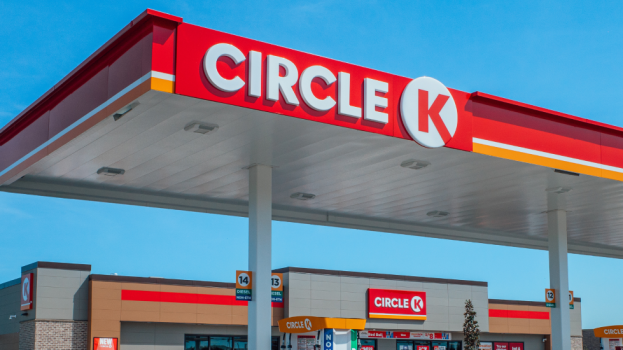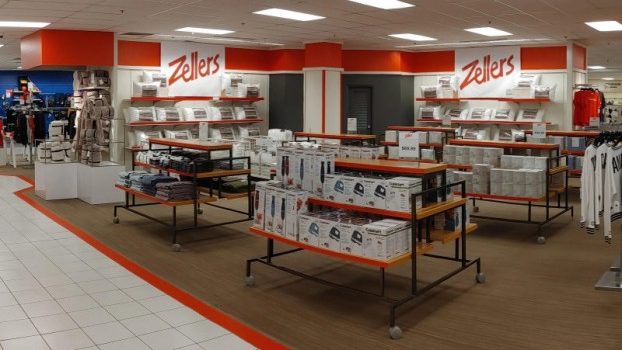In today’s highly competitive climate, retailers are constantly looking for new ways to grab pieces of the retail pie – often by attempting to reach different demographics through innovative new store concepts.
‘It’s all part of the process of evolution,’ says Richard Talbot, a retail analyst at Talbot Consultants in Unionville, Ont. ‘Successful retailers are always coming up with new concepts and designs. If you don’t move forward quickly you end up like the dinosaurs.’
Scaling down is one current trend that appears to be on the rise. Since the rapid expansion of the big-box retail category in the 1990s, some big-box players are starting to change direction with the launch of downsized mini stores designed to tap into a new pool of shoppers.
‘In order to keep growing, big-box retailers need to move into smaller retail markets and into urban centres where it’s more difficult to get the land for a big store, so we will inevitably see more of this strategy,’ says Talbot.
Home Depot Canada announced in July that it plans to roll out a downtown small-store concept to target the increasing number of people living in urban centres, who may not have the means or the inclination to travel to the retailer’s existing warehouse locations in the suburbs.
The retailer, which already has 83 big-box stores in Canada and plans to build another 37, is also considering opening the smaller 60,000- to 80,000-square-foot stores in rural markets. Toronto and Vancouver are being considered for the first smaller outlets in Canada, and could be the starting point for 150 additional locations.
‘We are looking to vary our traditional format in order to tap into markets that we would otherwise not be able to get into,’ says Shelley Schumaker, spokesperson at Home Depot’s Atlanta-based HQ. ‘They will be neighbourhood stores that draw shoppers predominantly from the local areas.’
Schumaker says that the new stores will be based on the 60,000-square-foot ‘urban neighbourhood’ Home Depot store that the retailer opened in the U.S. earlier this year – the first of its kind. The prototype in Brooklyn, N.Y. has aisles that are six feet wide instead of eight and carries 30% fewer items than the traditional big-box stores.
Home Depot also plans to cater to specific local needs in the Canadian downsized stores, as it has done in the Brooklyn store.
‘For example, in the Mill Basin area of Brooklyn we found that a lot of people were looking for kosher kitchens so we were able to cater to that need,’ says Schumaker. And the Brooklyn store has also filled a local demand for rounded doors to cater for a residential area where arched doorways are common, Schumaker says.
‘Once we identify appropriate real estate locations in Canada, we will start investigating the individual needs in those areas too.’ A marketing plan for the proposed launch will be established once suitable locations have been selected, Schumaker says.
Steve Boase, retail analyst at Toronto-based J.C. Williams Group, believes that the small-store concept makes sense as a way of attracting the impulse shopper. ‘If you’re living in an urban centre you’re not going to drive to the suburbs to buy a box of nails. You’ll just run to the nearest hardware store,’ he says.
However, Boase is skeptical about Home Depot’s plans to expand the new concept so extensively. ‘They are going to find it a little expensive to look at those sort of numbers when they are competing with the likes of Canadian Tire and small hardware stores that have a lot of established downtown real estate,’ he says.
Talbot adds that retailers such as Home Depot should be wary of eroding a brand name by changing the size. ‘My recommendation is to give the smaller stores a separate brand name such as Home Depot Express so people know it’s different. You don’t want consumers turning up and finding they can’t get the lumber they want from a smaller store and then going to a competitor.’
Home Depot isn’t the only big-box retailer to be thinking small. Global retail leader Wal-Mart plans to extend its own small-store concept known as ‘neighbourhood market’ stores in the U.S this year. The concept that was launched in 1998 to fill the gaps between superstores comprises mini Wal-Mart stores of 50,000 square feet, designed to lure shoppers with easier access, quicker checkouts and less crowded aisles. Consumer research and regular in-store surveys have found the stores to be extremely popular among time-conscious consumers.
‘There are a lot of markets where there isn’t the space for a super-centre, and our research has found that a lot of customers like the smaller stores,’ says Amy Wyatt, the retailer’s Arkansas-based director of international corporate affairs. Since its launch, the concept has been expanded to include 33 units in the U.S and one in China, and up to 20 more are planned for the U.S this year.
Marketing takes place primarily in the form of TV ads, which incorporate both the big-box and neighbourhood market models. ‘All of our advertising focuses on the pleasant shopping experience that Wal-Mart provides in all our store models,’ says Tom Williams, another spokesman. ‘Some of the ads specifically show the smaller stores,’ he adds. Wyatt says no plans are underway to expand the concept into Canada, although it remains a possibility for the future.
Another player embroiled in the downsizing trend is Eden Prairie, Minn.-based electronics retailer Best Buy, which purchased Canadian chain Future Shop last August for $580 million.
Since the first slimmed-down store opened, at two-thirds of the traditional 45,000-square-foot size in 1999, a total of 30 have now been built in the U.S, offering a more limited range of goods within each category. Following the success of these stores, the retailer now plans to open up to 30 more small stores this year in cities with fewer than 250,000 people.
‘The smaller stores are designed to have exactly the same format as our larger stores. It just enables us to reach markets with smaller populations,’ says Joy Harris, spokeswoman for Best Buy. The small stores are incorporated in the retailer’s extensive in-house marketing program that comprises a wide range of media, including TV, to tout some of its product offerings and low-cost, no-hassle shopping environment.
An additional new store concept is being tested by the retailer at a location in Manhattan. The Chelsea store, which opened in June, introduces a two-level urban format that separates the digital and mobile department from the remaining selling space.
Meanwhile, north of the border, Best Buy plans to open eight big-box stores in the Toronto area this fall – its first foray outside the U.S. The stores will be positioned as a separate entity to Canada’s Future Shop chain.
‘They are hoping to create excitement and buzz by adding a new banner into Canada, and ultimately to get more market share with the two banners operating side by side,’ says Boase.
Talbot, for his part speculates: ‘My belief is that the Future Shop name will eventually be phased out, and they will all become Best Buys.’
However, Lori Decou, senior manager of corporate communications for Vancouver-based Best Buy Canada, says that the retailer has no plans to swallow the Future Shop label. ‘We believe there is room for another retailer within the electronics business in Canada,’ she says, adding that the Toronto launch will mark the start of a long-term plan to roll out the Best Buy label across Canada.
As big-box stores, the new stores will be exclusively in suburban power-centre locations, Decou says, similar to those where Future Shops may be found alongside other retailers such as Wal-Mart and Rona. In fact the Heartland Shopping Centre in Mississauga, Ont. will see a Best Buy store opening in very close proximity to an existing Future Shop store this fall.
Decou does not foresee any difficulties in operating the two chains side-by-side, as she says they will be positioned very differently to offer consumers a choice of shopping experiences.
‘Unlike Future Shop, the staffing structure at Best Buy is not commission-based so it will appeal more to consumers who don’t want so much sales assistance, but know what they want and prefer to access the product quickly on their own,’ she says. ‘We are targeting consumers by mind-set rather than by age.’
Best Buy, which will adopt the same format in Canada as its big-box stores in the U.S., will also carry some different product offerings to the Future Shop chain, although Decou says the merchandising list has yet to be finalized. And the Best Buy stores will have a different look and feel to their Future Shop counterparts with a larger, open floor plan and wider aisles.
Local print advertising will support the launch of each individual Best Buy store this fall, while an extensive campaign will follow to promote the retailer’s entry into Canada with media including TV, radio, flyers, inserts and outdoor, taking a similar tack to the U.S. messaging. A number of promotional events in the GTA are also being planned, although no details have yet been finalized.
‘Our strategy is to launch each store relatively quietly and then go all out with the big campaign when we have more stores in the market,’ says Decou.
All advertising is being created by Best Buy Canada’s in-house creative team in conjunction with the in-house advertising team at the retailer’s parent company in Eden Prairie. Doner Canada will oversee ad placement.
Meanwhile, Paramus, N.J.-based toy giant Toys ‘R’ Us is also joining the downsizing trend by testing a new small-store format in smaller markets where it currently has no presence. Four units at 42,000 square feet are expected to open by the fourth quarter of 2002, possibly leading to an eventual rollout of up to 200 mini stores, to be named after the revived company mascot, Geoffrey.
In another new concept, the retailer plans to have converted all 680 of its U.S. stores to what it calls the Mission Possible format by October. The new concept involves grouping toys by themes, and adding wider aisles and lower shelves. The retailer reported in its Q1 2002 results that the stores that had already taken on the new look achieved a 7% comparable sales gap over unrenovated stores during this period.
Despite the number of players in the downsizing trend, there are a number of obstacles to be overcome, according to Gwen Morrison, president of the North American division of The Store (a newly formed global retail marketing brain trust, set up by London, Eng.-based marketing firm WPP Group).
‘The challenge is in evolving the brand and store environment into a format that makes sense for that shopping occasion,’ says Morrison, who is based at The Store’s Chicago location. ‘It’s not enough to scale down an existing format. You have to define how the brand can meet consumer needs in a new way.’
Kids rule at Wal-Mart
The spending power of today’s kids is leading many retailers to come up with new concepts to attract the younger consumer. Wal-Mart, for example, is testing a new store-within-a-store concept to increase its appeal to children in the U.S.
‘Kid Connection’ candy stores have opened in both super-centres and the smaller ‘neighbourhood market’ stores, offering a wall devoted to bulk candy, together with novelty items such as candy dispensers and rides for toddlers. By the end of 2002 the retailer hopes to be operating 60 of these in-store candy shops.
‘So many families shop with children in tow, so this is going to be a great magnet for them. It has all the ingredients to be a successful strategy,’ predicts Gwen Morrison, president of the North American division of The Store, a retail marketing firm.
Morrison, who is based in Chicago, believes that Wal-Mart can make no mistakes when it comes to testing new formats. ‘They’ll never see a downside to finding out more about the shopper and what they respond to,’ she says. ‘They will continue to look for new ways to steal shoppers away from specialty retailers.’























